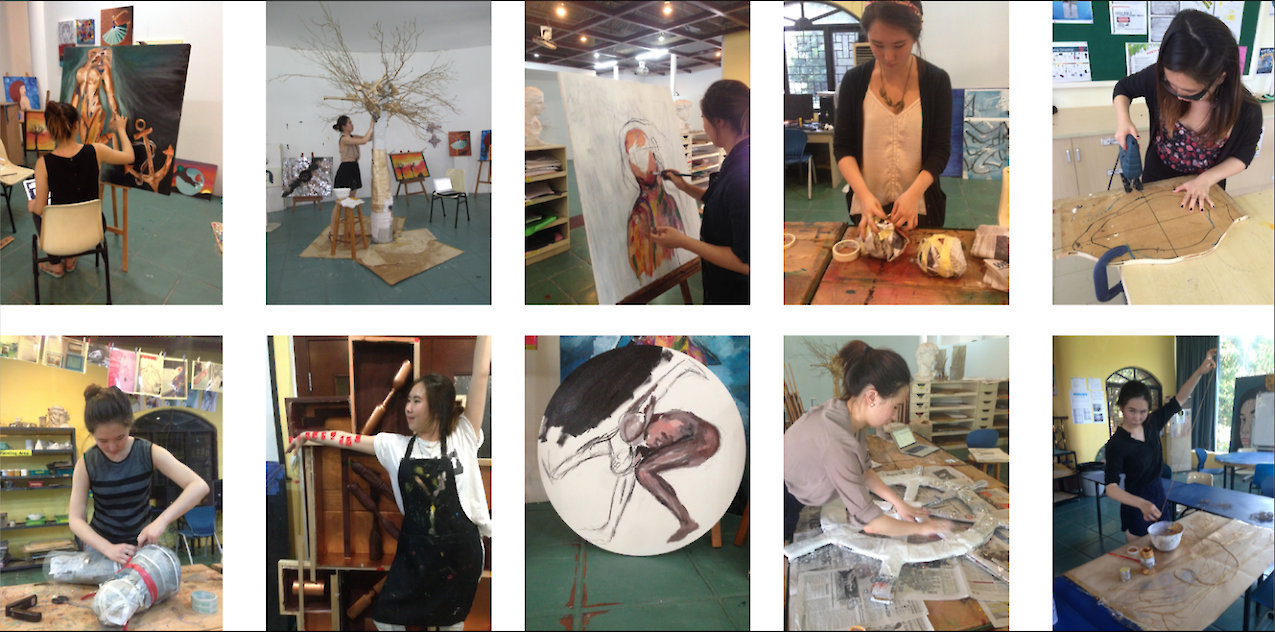Getting Into a US Art School as an International Student
Written and edited by Cecilia Liu and Nadya Soetomo.
Breaking news: Art schools aren’t always about drawing and painting!
Cecilia Liu graduated from School of the Art Institute of Chicago (SAIC) with a degree in Fine Arts, emphasizing on architecture. Now, you may be wondering, “Architecture in an art school?” In a Millie’s Guide webinar, we invited Cecilia to share why she made this decision and her experience in applying and preparing for university. Read on for more information about getting into a US art school as an international student!
Majors in art schools: Fine Arts vs. Design
The main purpose of art schools is to provide concentrated Fine Arts (a field of art which focuses on aesthetics) programs. However, that doesn’t mean you’ll only spend time sketching and drawing. In fact, there are tons of majors aligned with pursuing a fine arts degree like photography, glasswork, sculpting, performance art and many more!
Not only that, many art schools also offer a design department that covers industrial design, furniture-making, architecture and more for students who want to pursue fine arts and design hand-in-hand.
Typical art school curriculum
As Cecilia’s experience at SAIC demonstrates, there’s a wide selection of courses offered each semester. However, your first year might be your toughest year since you can’t choose courses to your liking just yet — you must fulfill the basic course requirements such as below:
- Contemporary practice
This class introduces you to all courses of study the school has. It helps you to familiarize yourself with the different facilities and resources the school offers such as 3D printers and laser-cutters. All freshmen must attend this class, so regardless of your major, this class will help you to connect with people.
- Research
You’re allowed to specifically choose the type of research you want to do, which will help you in your future specialization (major-related courses).
- Art history
Freshmen will take 19th century art history and will continuously learn up to the 21st century art progression in their following undergraduate years.
- Liberal arts
This course depends on your credits from high school. Regardless, it’s most likely for you to take humanities, sciences, and math!
- Electives
A course that students take (by choice) from subjects an art school offers. For example, if you haven’t had a class in photography and you’re curious about learning it, you can choose photography as your elective class.
- English
This course depends on the credits you transferred, which later on determines your placement in a class that suits your level of language.
After freshman year, you’re going to have a more comfortable time moving to the next level as you can choose your own (major-related) classes! Although some course requirements are still included, they won’t stop you from choosing the courses you might be more interested in.
Admission preparation during high school
To build your application, the first thing Cecilia advises is to be engaged in your academics. If your final scores reach a satisfactory level, the admission board will definitely appreciate you for having paid attention to your education — not to mention the credits you can transfer in university!
On a second note, you should hand in your TOEFL and SAT results as an international student. Although the SAT is not the main focus for most art schools, having it prepared will enable you to apply for more art schools since some may still require it.
Stepping outside of the academic bubble, getting involved in different extracurriculars like joining the soccer team or participating in a musical is a way to showcase your different interests to the admission board. Furthermore, don’t forget your personal statement! Instead of writing to impress the school, write to express yourself as a person — schools appreciate passionate students who know their initiatives in life.
Beside the usual academic scores, personal statements and extracurricular activities, the key element of an art school application is your art portfolio, which is a collection of your work in various art forms (ie. painting, pottery, etc.). Your art portfolio must show your technical and storytelling expertise in the arts. You should produce deeply meaningful visual experiences instead of merely highlighting your technical ability or focusing only on one medium.
While schools do cherish students who are immensely focused on one field — sparking the students’ earnestness — having a great art portfolio requires you to show different samples of your best artwork, demonstrating your versatility as a well-rounded artist, as well as your willingness to learn things outside your comfort zone.
Most importantly, make sure your art portfolio sparks originality: Show your own style and method of work!
“Make sure your art portfolio sparks originality: Show your own style and method of work!”

What should I consider before applying for a US art school?
Other than your university application, here are some essential factors you should think about and prepare before pursuing an art school in the US:
- High-cost tuition
Art schools are usually private, so the tuition is higher than traditional universities. However, there are lots of scholarships and grants provided for students. Not only that, you can also get on-campus jobs that cater to your schedule!
- Location and resources
Envision where you see yourself (career-wise) to find an environment that helps you grow as an artist. To save both time and energy, find out if the resources around your chosen area can support your career, such as access to materials, campus facilities, or even advice from an artist-next-door!
- Dormitory
Some art schools may require first-year students to live in dorms. Although you’ll spend some extra money to rent, it’s a great opportunity to familiarize yourself with your surroundings — you can make friends and get closer with your dorm mates!
- Internship opportunities
Look further into the art schools you want to go and see the career experiences they provide for students. Cecilia was introduced to the Career and Professional Experience (CAPX) program in SAIC, which helped her connect with different employers locally and internationally.
- Department rankings
Note a school’s specific department’s ranking instead of looking for the best-ranked schools in the country. That way, you will already know the programs they offer and find lecturers’ resumes to match your study preference!
- Optional Practical Training (OPT)
After graduation, the US government offers international students an OPT — a one-year extension of your student visa that allows you to practically work in the industry. But after your OPT ends, you can’t extend your working visa without having a sponsor to grant it for you. That’s why it’s important to decide where you want to grow after graduation prior to entering an art school.
“Choose wisely. College is what you make of it.”
For more of Cecilia’s best tips, including how she learned more than what her tuition covered in SAIC, check out our webinar on Millie’s Guide to Art School (US). For a quick reference on US art schools you might be interested in, check our article on Best US Art Schools for International Students!
